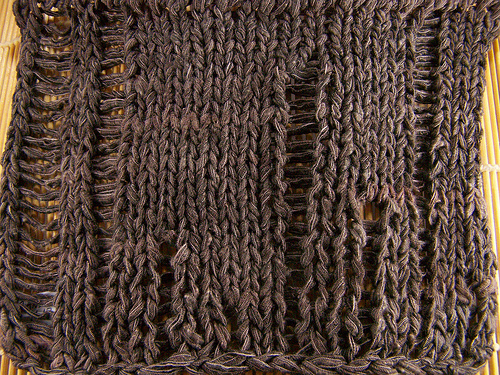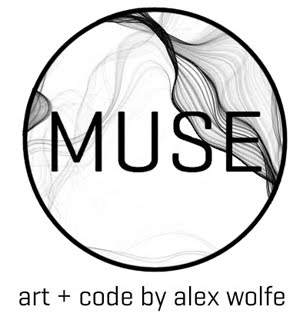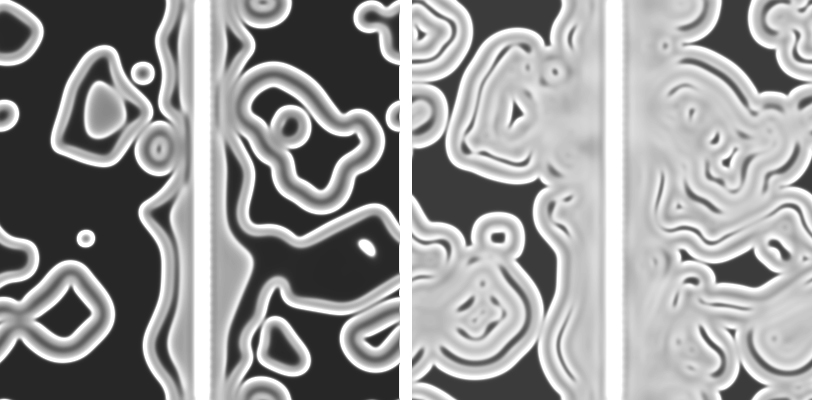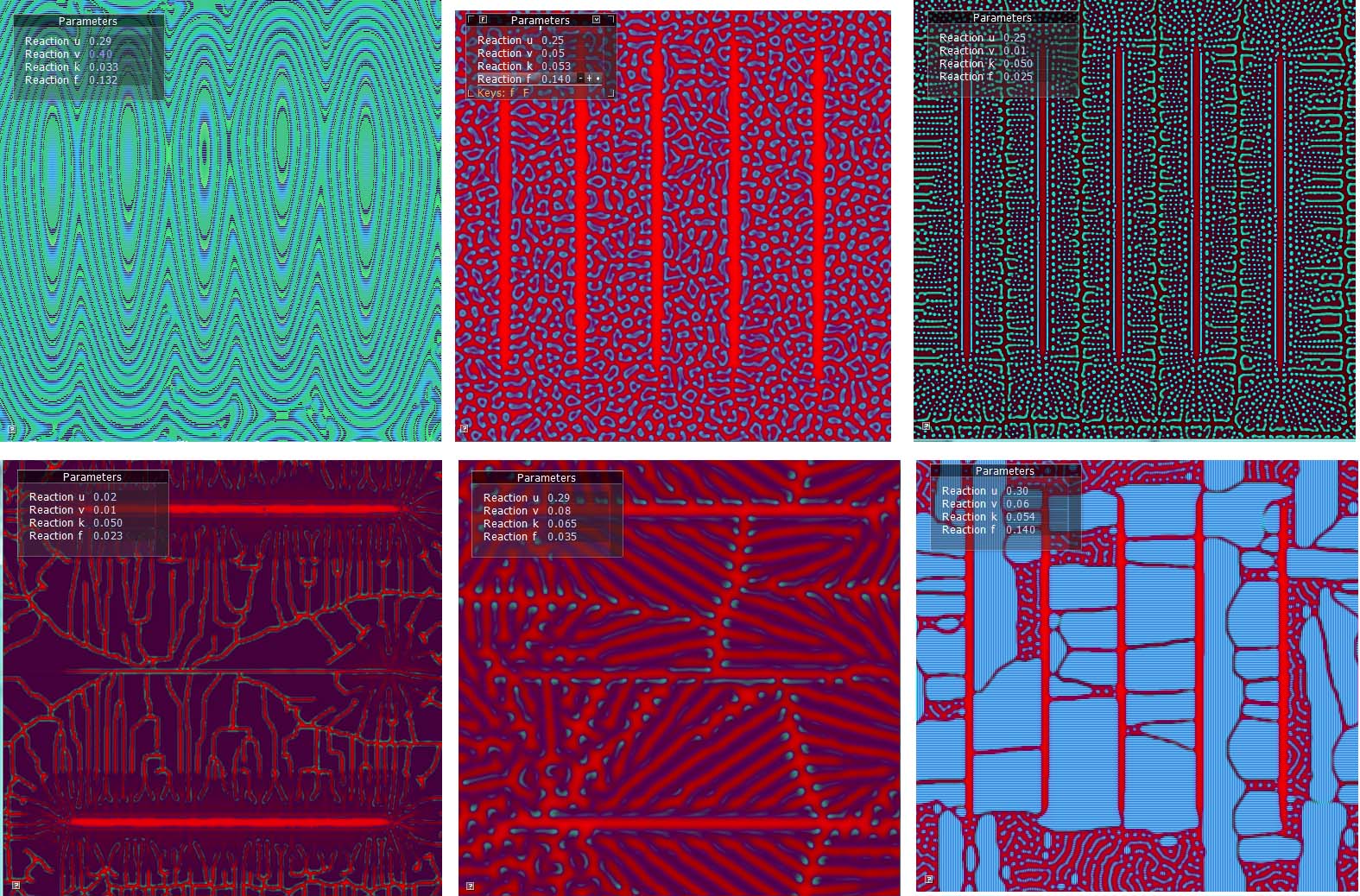4.29.2011
Reaction-Diffusion Knit
So I finally finished the Reaction-Diffusion swatch! Doing it by hand instead of on a computer controlled machine took forever (for something that was rather small), but it allowed me to incorporate certain textural stitches such as cables that would have been impossible otherwise. I really like the final product, and actually wherever there were 3x3 cables in the pattern produced the best results, but those are really difficult to produce on the machine (you have to knit those rows manually since the stitches are too tightly pulled). The 1x1 cables of which there was an abundance of in that middle section are much more subtle.
I definitely want to knit another swatch at a large gauge for hopefully more obvious results and produce either a simple sweater or dress during my off days for final.
Also my terrible digital camera, was well, being absolutely terrible so I'll repost with better pictures of the final later.
The swatch was knit from this digital reaction diffusion swatch
Labels:
art,
digital work
4.26.2011
shameless self promotion
lately i'm all about the "get your work out there with the internet so eventually one day you can afford to eat multiple times a day" vibes so if you're into that kind of thing, you can now follow my blog with bloglovin
Labels:
shameless self glorification
4.25.2011
generative flocking bangle rendering
The charming Colin Haentjens showed me how to use the V ray render on Rhino today, so I have some snazzy high def images of some new meshes generated from my flocking simulation. The colored ones are higher resolution OpenGL renderings straight from Processing (pretty nice right?), and the others I made in Rhino.
For a quick refresher (original post) these bangles are the product of generative user interactive particle system. The particles naturally exhibit flocking/swarming behavior that the user can manipulate while the form is "growing". After completion the mesh can be iteratively smoothed or subdivided (though usually the geometry is too complex for noticeable subdivision). The meshes are exported from Processing as .STLs which can immediately either be thrown into Rhino or Solidworks for further manipulation or to be 3D printed.
3d flocking with Perlin noise from Alex Wolfe on Vimeo.
For a quick refresher (original post) these bangles are the product of generative user interactive particle system. The particles naturally exhibit flocking/swarming behavior that the user can manipulate while the form is "growing". After completion the mesh can be iteratively smoothed or subdivided (though usually the geometry is too complex for noticeable subdivision). The meshes are exported from Processing as .STLs which can immediately either be thrown into Rhino or Solidworks for further manipulation or to be 3D printed.
3d flocking with Perlin noise from Alex Wolfe on Vimeo.
Labels:
art,
digital work
4.20.2011
Computational Knitwear Progress
So after several miserable knitting machine swatch failures, I'm come to the conclusion that in order to create a visually appealing pattern, I'm going to have to work forwards and backwards, making sure that the generative pattern actually conforms to more "rules" of knitting rather than being purely chaotic.
I found an awesome book, “Creative Knitting: A New Art Form” by Mary Walker Phillip which is chock full of stuff like this which really made me want to step up my aesthetic game. (Thanks to Claire Straiker for showing me this swatch!)
I also need more stitch variation than the previous sketches were producing in order to create something like this. At the very least eyelets and cables which need to run in parallel lines. So taking a suggesting from Golan I started playing with reaction diffusion that can be spawned off of underlying layers of different equations in order to create more variety in stitch pattern and also more interesting forms. I still like the idea of using it to "grow" your own skin, since the same algorithm is used to produce so many different patterns in nature (often for pelts that we kill for and make into clothing anyway). I'm aiming for a user interactive app that takes some input into the system and generates the pattern for a swatch as far as the software end goes
So here are some initial attempts in processing...
But really its that time again where Processing reaches its limit and its time to port over to Cinder. Fortunately Robert Hodgin and rdex-fluxus had some sample Shader scripts online specifically for reaction diffusion so it was much easier to get started that I initially feared.
Andrew from the Museum of Arts and Design, who graciously agreed to help me knit a prototype!, got back to me as well. Unfortunately his machine doesn't do cables, but I could try substituting different kinds of stitches to mimic the effect.
In the meantime, I bought a super simple Singerlk off of craigslist, and after a pretty rocky learning curve, its actually pretty simple to generate alot of fabric quickly by hand. Also, you can pretty much do any kind of stitch on it (if you're willing to do the extra work to set it up. So since I'm trying to suppress the gnawing fear that the whole send out my pattern and get it nicely printed and sent back in time for the show is going to blow up in my face, its reassuring to know that if I had to, I'm pretty sure I could generate at least swatches myself.

I found an awesome book, “Creative Knitting: A New Art Form” by Mary Walker Phillip which is chock full of stuff like this which really made me want to step up my aesthetic game. (Thanks to Claire Straiker for showing me this swatch!)
I also need more stitch variation than the previous sketches were producing in order to create something like this. At the very least eyelets and cables which need to run in parallel lines. So taking a suggesting from Golan I started playing with reaction diffusion that can be spawned off of underlying layers of different equations in order to create more variety in stitch pattern and also more interesting forms. I still like the idea of using it to "grow" your own skin, since the same algorithm is used to produce so many different patterns in nature (often for pelts that we kill for and make into clothing anyway). I'm aiming for a user interactive app that takes some input into the system and generates the pattern for a swatch as far as the software end goes
So here are some initial attempts in processing...
But really its that time again where Processing reaches its limit and its time to port over to Cinder. Fortunately Robert Hodgin and rdex-fluxus had some sample Shader scripts online specifically for reaction diffusion so it was much easier to get started that I initially feared.
Andrew from the Museum of Arts and Design, who graciously agreed to help me knit a prototype!, got back to me as well. Unfortunately his machine doesn't do cables, but I could try substituting different kinds of stitches to mimic the effect.
In the meantime, I bought a super simple Singerlk off of craigslist, and after a pretty rocky learning curve, its actually pretty simple to generate alot of fabric quickly by hand. Also, you can pretty much do any kind of stitch on it (if you're willing to do the extra work to set it up. So since I'm trying to suppress the gnawing fear that the whole send out my pattern and get it nicely printed and sent back in time for the show is going to blow up in my face, its reassuring to know that if I had to, I'm pretty sure I could generate at least swatches myself.

Labels:
art,
digital work
4.19.2011
Grogg :: a cocktail compendium
just had our demo for my final web applications project with Ben and Dan! Unfortunately we have no intention/way to host it full time, but it was very interesting to design. Inspired by a beautiful poster by Konstantin Datz, Grogg is an application that allows you to either design your own drinks, or will let you know what beverages you can create with the ingredients you have on hand. Users can log in to store their favorite recipes, and follow their friends in order to keep track of what delicious things everyone is drinking.
Dan and Ben did most of the backend database work in Ruby on Rails which none of us had any experience with before. I was responsible for the design and the interactive graphical app which I'm creating in Processing (we really wanted to avoid flash, and still get something that would interact properly with our server/MySQL database) using Jeremy Ashkenas's library for Processing/Ruby interaction.
Here are some screenshots : )
(...err we didn't completely finish for the deadline, so all the areas with the vertical grey stripes were intended to be tiled with dynamically generated thumbnails of either profile pictures of followers or drinks)
Dan and Ben did most of the backend database work in Ruby on Rails which none of us had any experience with before. I was responsible for the design and the interactive graphical app which I'm creating in Processing (we really wanted to avoid flash, and still get something that would interact properly with our server/MySQL database) using Jeremy Ashkenas's library for Processing/Ruby interaction.
Here are some screenshots : )
(...err we didn't completely finish for the deadline, so all the areas with the vertical grey stripes were intended to be tiled with dynamically generated thumbnails of either profile pictures of followers or drinks)
Labels:
art,
digital work
4.05.2011
Voronoi Portraits
While experimenting with different generative systems to make a knitting algorithms out of I ended up with these interesting Voronoi diagram portraits. Searching with expanding co-centric circles, if a point was under a certain threshold, I marked it for the center of a voronoi cell and generated the diagram from it.
I'm actually trying to find a decent system to make lace or cables from, so either a distinct holey geometry or overlapping pseudo-chaotic paths. Flocking actually would be perfect, but I confess, I'm actually quite sick of it and I want to try something new. The Voronoi didn't work out (its a bit too regular), but they still were an incredibly fun exercise.
I'm actually trying to find a decent system to make lace or cables from, so either a distinct holey geometry or overlapping pseudo-chaotic paths. Flocking actually would be perfect, but I confess, I'm actually quite sick of it and I want to try something new. The Voronoi didn't work out (its a bit too regular), but they still were an incredibly fun exercise.
Labels:
art,
shameless self glorification
Subscribe to:
Posts (Atom)














